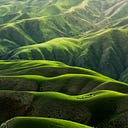The Challenges before the Fishing Community Today in Tamilakam
Dr. Santakumari
The Tamil landscape is divided into forest tract (mullai), hilly tract (kurinci), the fertile cultivable tract (marutam) and the littoral tract (neytal) (Tolkāppiyam 951). The fishing community functions in the neytal land. They were classified as paravar, nulaiyar, who enter the ocean to fish and umanar who produce salt from the sea-water. Besides there are various other subdivisions among them.
The expertise of the fishermen.
Catching fish in the ocean is not that simple as one might naively believe. Their knowledge of the ocean includes the undercurrent movements of the waters in different seasons, the type of fish available at what part of the ocean and at what season of the year. They know correspondingly the type of nets they would require to harvest different kinds of fish. Besides they need enormous physical and mental stamina to sustain the stormy weather for days together even risking their lives.
The type of net they use to catch fish.
The sangam poems specifically record all details of their livelihood. For example Kaduvan Mallanār sings in Akanānūru 70 thus:
“Our friendship with the lord
of the shores,
where fishermen from our
flesh-reeking village who catch fish
with curved boats, praise the benefits
of their beautiful nets with small holes,
and share their ayirai fish with eyes
with everybody,
caused women to gossip and blame us.
Also, many people knew about it.”
( Translation by Veidehi)
Fishing is a joint venture, as another akam poem (Akanānūru 30) describes their activity in detail:
“Oh man from the shore where happy
fishermen who unite with their partners
catch loads of fish with pretty, closely woven
nets made with long ropes, join their
youngsters and elders on the beach,
pull the nets with uproar to the sandy shore,
gathering together like the strong bulls
of salt merchants that are yoked to wagons,
give generously like charitable farmers,
and fill the bowls of those in need with fish,
splitting the rest of their catch into sections,
calling out prices, and sleeping on the shore
with tall and firm sand dunes!”
They are also divers to collect pearls from the sea.
“Look there! There appears our fine
small village, with tall sand dunes
where fishermen with large boats
dive into the bright, large ocean
for right-whorled conch, avoiding
shark attacks, who are welcomed to
the sounds of blowing conch shells
and uproars in splendid Korkai town.”
(Akanānūru 350)
What sustains them in their struggles?
They need protection as they venture into the ocean which is a risky journey in the midst of natural forces like tsunami type of storm and other unforeseen eventualities. Their faith sustains them in such moments of struggles. Pattinappālai (87–89) records how the Fishermen worship the Ocean God.
“They plant horns of pregnant sharks,
pray to the powerful god, wear thālai
flowers and drink liquor, of palmyra
trees with scaly trunks, that was offered
to their god.”(Trans. Vaidehi)
The shark fish has guided their way into the ocean and hence their worship has this element. This tradition is now continued in the form of kilakkittiyār worship. They are of the matriarchal society. Hence they worship the Amman deity in general (Kāliyamman, Māriyamman, Draupati) and in particular Kutti-Āntavar. They follow a set of rituals as a community.
Secondly, there is also a village panchayat where the elders sort out the problems arising among themselves. They also build human solidarity by caring for each other at the time of death of the neighbours. The women folk take care of the sale of the fish when the men are at sea daily. Selling fish is itself a tantalizing job as they do not have all facilities to store up and preserve the fish for days.
The restrictions for the fishing.
Fishing is seasonal in the sense that one does catch fish on a daily basis. Only a certain season (April-May-June) is conducive for fishing and October-November-December they do not enter the ocean. Now there are restrictions imposed by the government: they specify the time, the distance and the quantity of fish. This is a big blow for the fishing community. In India the fish export trade began in 1938–39. Now in 2019–2020 the export value has gone up to 46662.85 crores. That means the Indian economy gains much from the fishery.
The border restrictions.
People who have invested a huge amount of money in buying net and boat and seasonal changes due to the blowing winds the fishermen put their best to have a good harvest at sea. So they do cross the territorial waters but the fishes do not remain within the prescribed borders. But fishermen have no freedom which the fish enjoys. After the handing over of the Katchu island to Sri Lanka as there is no clear understanding between these countries, fishermen face frequent harassment from the Sri Lankan army.
Restrictions in selling fish.
It is done by the middlemen who exploit the fishermen. They do not pay the amount at once. They delay and their system of getting loan etc. becomes complicated. The Society at large should understand this community and its multiple problems. Will the government pay attention to these issues? This is a million dollar question which needs to be addressed at every forum.
About the Author:
Dr. Santakumari is Assistant Professor of Tamil Literature at Poompuhar college, Melaiyur. She is a writer, poet, composer of music and singer. She has published over 20 research articles. She is the first woman among the fishing community from the Nagapattinam district to do doctorate and play the role of a public intellectual today. She has received several awards as writer, the best teacher, life-time achievement.
